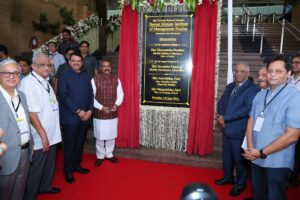
Unemployment has rose to a four-decade high of 6.1 per cent in the country, latest figures released by the Ministry of Statistics and Program Implementation (MoSPI) have revealed. But the bad news has reportedly affected urban youth, those aged between 15 and 29 years, the hardest.
According to the Periodic Labour Force Survey (PLFS) data for 2017-18, nearly a quarter of young urban job seekers remained unemployed during the December quarter, Mint reported. The figured then rose for three quarters, the unemployment rate among urban youth hit 23.7 per cent in the third quarter of FY18. This is a sorry state of affairs after the urban youth spend an average 11 years in formal education.
PLFS was launched with the objective of measuring employment every three months in urban areas and once a year in both rural and urban areas. The survey uses education levels as a criterion for stratification at the ultimate level. This was done because some feel education levels in the economy have risen due to this various policy interventions such as the Right to Education Act, and it would be important to assess the level of employment and unemployment with this benchmark.
The quarterly survey only captures data classed as current weekly status (CWS), while the annual survey measures both the usual status and CWS. A person who is unable to get work for even an hour during a reference period of seven days preceding the date of survey, despite seeking employment, is considered unemployed under CWS. Under usual status, the employment activity of a person is determined on the basis of a reference period of 365 days preceding the date of the survey.
In CWS, the unemployment rate was 8.8% among males and 12.8% among females in urban areas, said the PLFS annual report. In the usual status, unemployment rate stood at 7.1 per cent among males and 10.8 per cent among females in urban areas.
The daily added that male youth unemployment rose to 18.7 per cent in FY18 from 8.1 per cent in FY12, when measured by the usual status, while for females it went up to 27.2 per cent from 13.1 per cent in the same period.
Worryingly, while the unemployment rate has been going up, the labour participation rate – the proportion of the working age population (over 15 years) that is either employed or actively seeking a job – has been falling. As per the latest survey, the LFPR for urban youth in the 15-29 age bracket in FY18 is pegged at 38.5 per cent, down from 40.5 per cent in FY12 as more of them enrolled for higher studies, especially females. The pan-India figure for all ages in FY18 stood at 36.9 per cent, down from 39.5 per cent in FY12.
The double whammy of sliding LFPR and rising unemployment means that India’s employment rate is falling, too, which is bad news for the Modi 2.0 government. And with the number of Indian youth fast rising – from 333 million as per Census 2011 this demographic is projected to grow to 370 million by 2031 – the problem of jobless growth will only get exacerbated if remedial steps are not taken post haste.
Youth unemployment in the December quarter of 2018 was recorded the highest in Bihar (40.9%), followed by Kerala (37%) and Odisha (35.7%), while it was the lowest in Gujarat (9.6%). The surge in youth unemployment has made it hard to come in terms with. During Q3 FY18, 1.1 million net new entrants reportedly joined EPFO in the age group of below 18 to 28, out of 1.4 million total net new entrants across all age groups.
As per the survey, the youth amounted for 28.2 per cent of urban males and 27.8 per cent of urban females. Furthermore, among this demographic, 65.8 per cent of urban males and 65.4 per cent of urban females were educated, up from around 60 per cent in FY12. However, in terms of technical education – a degree or diploma in fields such as engineering, medicine, agriculture and technology, among others – things are far more alarming. A whopping 94.3 per cent of those aged over 15 years in urban areas received no technical education.
It is seen that in India nearly 2 per cent of the persons of age 15 -59 years had received formal vocational training: 1.2 per cent in rural areas and 3.7 per cent in urban areas, the survey added. The percentage of urban youth who received formal vocational training increased marginally from 4.2 per cent in 2011-12 to 4.4 per cent in 2017-18. In urban areas, among people who received formal vocational/technical training, 57.1 per cent were employed, 11.3 per cent were unemployed and nearly 31.5 per cent were not in the labour force.
The quarterly PLFS data also underscored the massive gender pay gap in the country. In the urban areas, earnings during the preceding calendar month among wage/salaried employees ranged between Rs 17,000-18,000 for males and Rs 14,000-15,000 for females during the four quarters of the survey period. A male employee earned nearly 1.2-1.3 times the earnings of a female regular wage/salaried employee in FY18.
In terms of average gross earnings from self-employment work, urban males earned around Rs 16,000 while the same for females was around Rs 6,500-7,500 during the review period.



